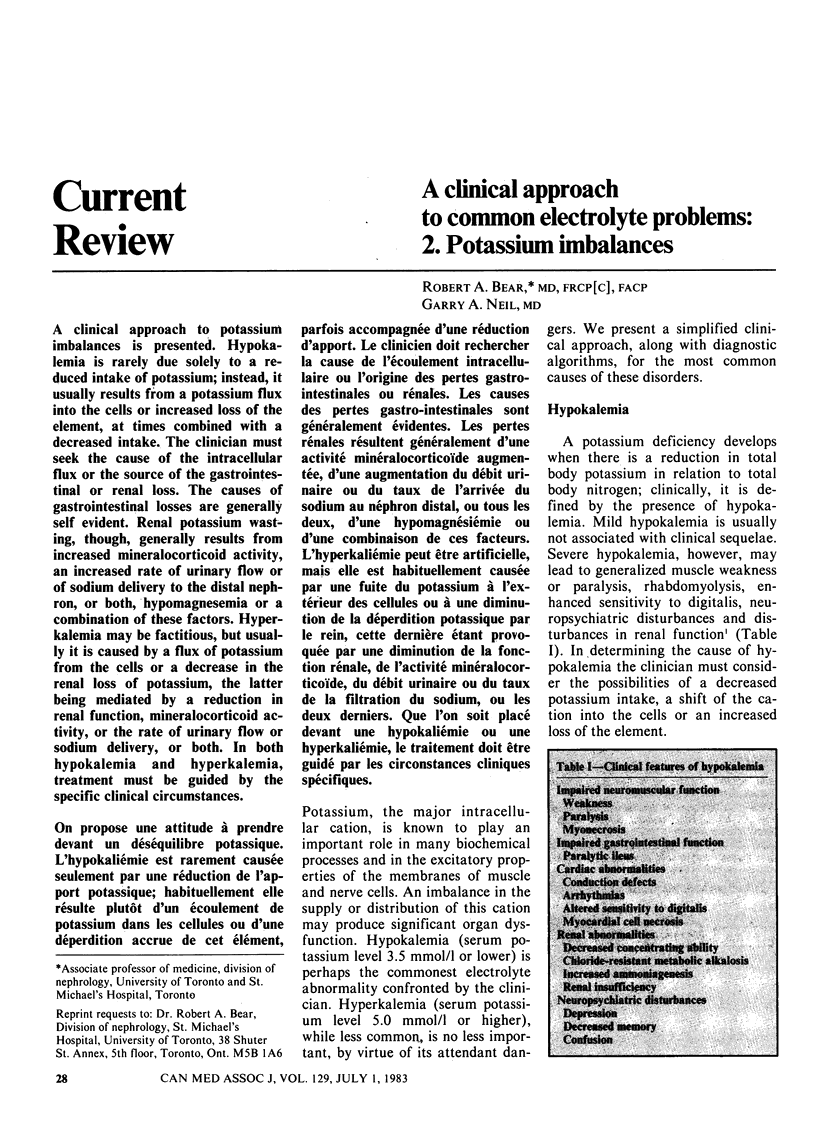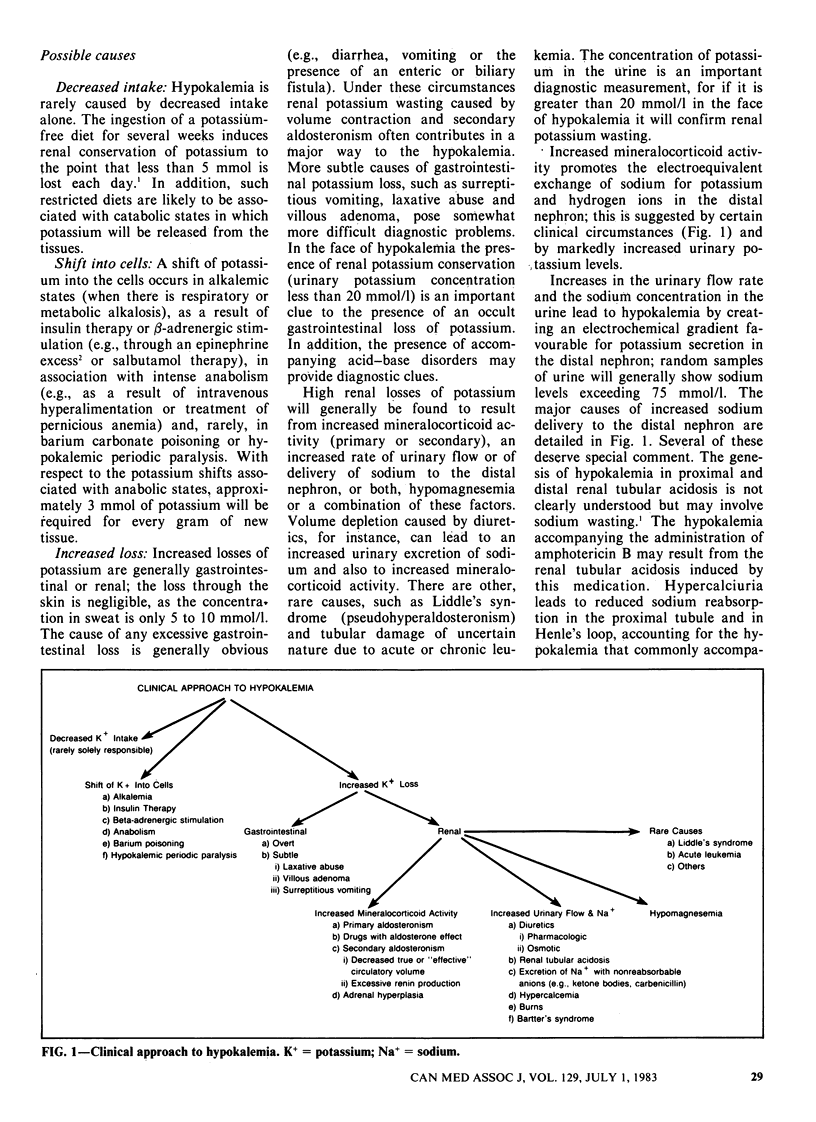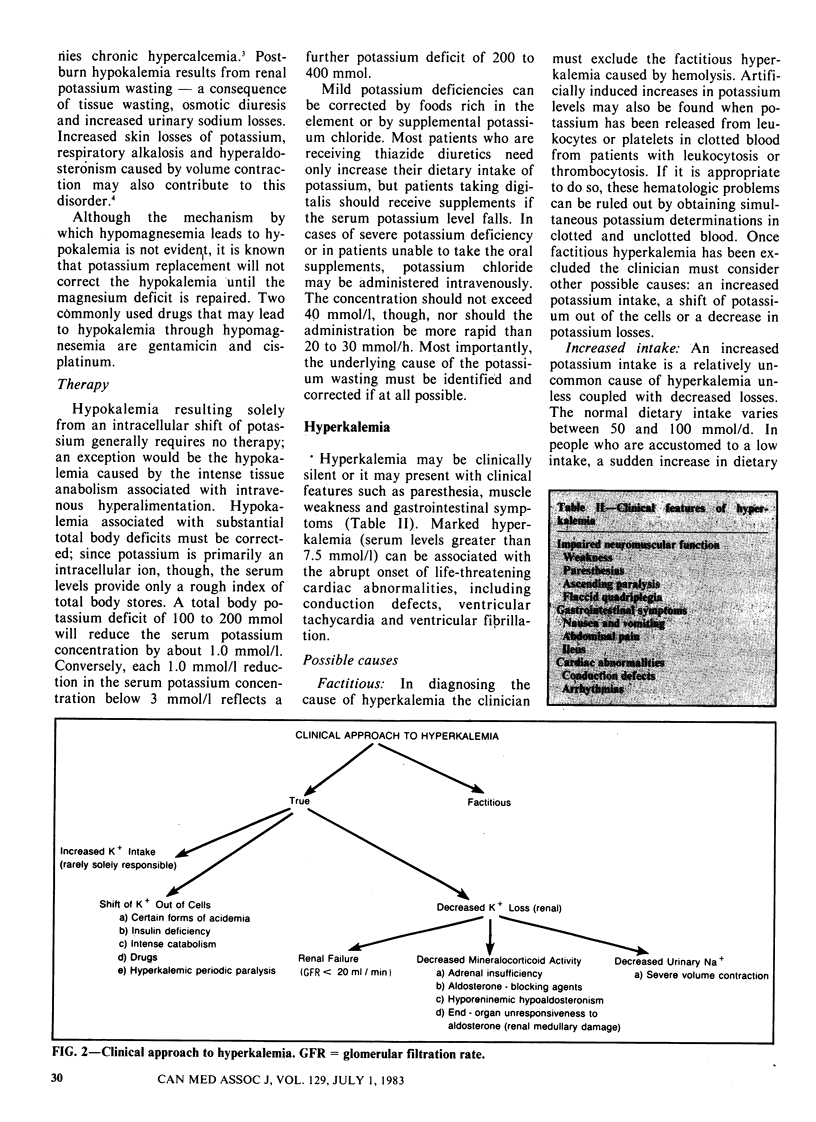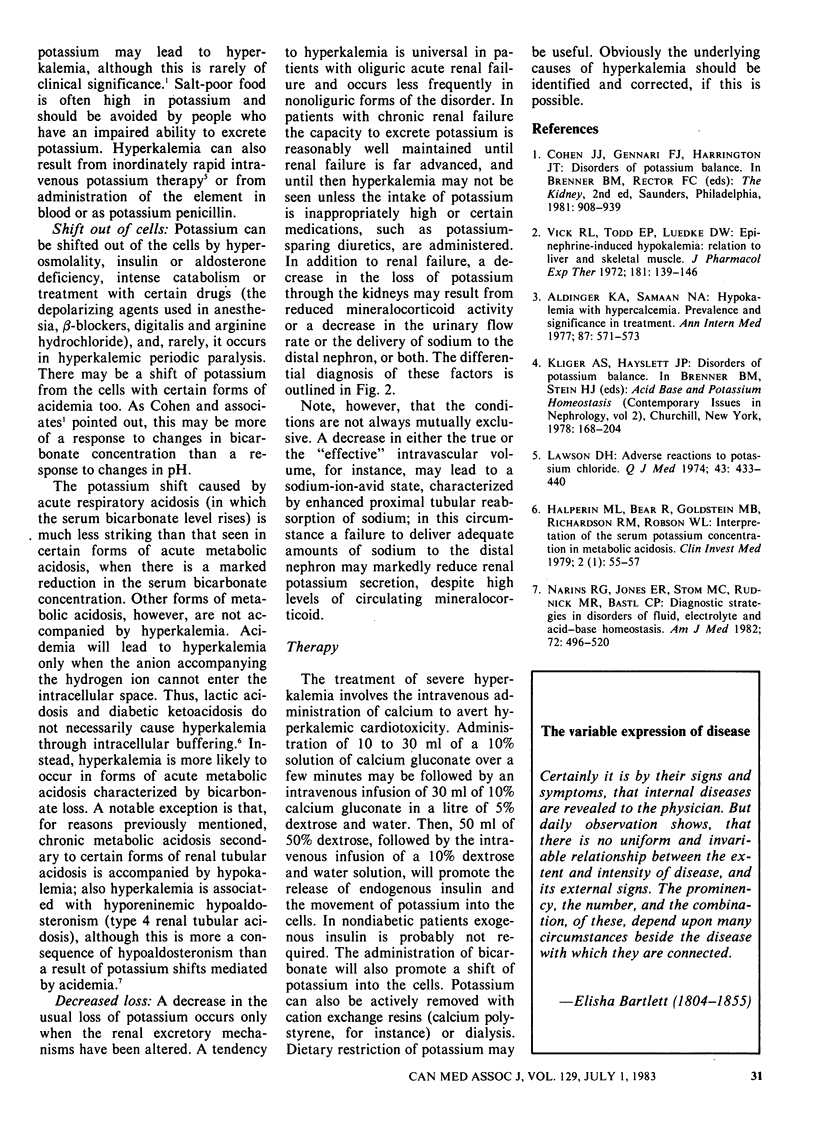Abstract
A clinical approach to potassium imbalances is presented. Hypokalemia is rarely due solely to a reduced intake of potassium; instead, it usually results from a potassium flux into the cells or increased loss of the element, at times combined with a decreased intake. The clinician must seek the cause of the intracellular flux or the source of the gastrointestinal or renal loss. The causes of gastrointestinal losses are generally self evident. Renal potassium wasting, though, generally results from increased mineralocorticoid activity, an increased rate of urinary flow or of sodium delivery to the distal nephron, or both, hypomagnesemia or a combination of these factors. Hyperkalemia may be factitious, but usually it is caused by a flux of potassium from the cells or a decrease in the renal loss of potassium, the latter being mediated by a reduction in renal function, mineralocorticoid activity, or the rate of urinary flow or sodium delivery, or both. In both hypokalemia and hyperkalemia, treatment must be guided by the specific clinical circumstances.
Full text
PDF



Selected References
These references are in PubMed. This may not be the complete list of references from this article.
- Aldinger K. A., Samaan N. A. Hypokalemia with hypercalcemia. Prevalence and significance in treatment. Ann Intern Med. 1977 Nov;87(5):571–573. doi: 10.7326/0003-4819-87-5-571. [DOI] [PubMed] [Google Scholar]
- Halperin M. L., Bear R., Goldstein M. B., Richardson R. M., Robson W. L. Interpretation of the serum potassium concentration in metabolic acidosis. Clin Invest Med. 1979;2(1):55–57. [PubMed] [Google Scholar]
- Lawson D. H. Adverse reactions to potassium chloride. Q J Med. 1974 Jul;43(171):433–440. [PubMed] [Google Scholar]
- Narins R. G., Jones E. R., Stom M. C., Rudnick M. R., Bastl C. P. Diagnostic strategies in disorders of fluid, electrolyte and acid-base homeostasis. Am J Med. 1982 Mar;72(3):496–520. doi: 10.1016/0002-9343(82)90521-6. [DOI] [PubMed] [Google Scholar]
- Vick R. L., Todd E. P., Luedke D. W. Epinephrine-induced hypokalemia: relation to liver and skeletal muscle. J Pharmacol Exp Ther. 1972 Apr;181(1):139–146. [PubMed] [Google Scholar]


